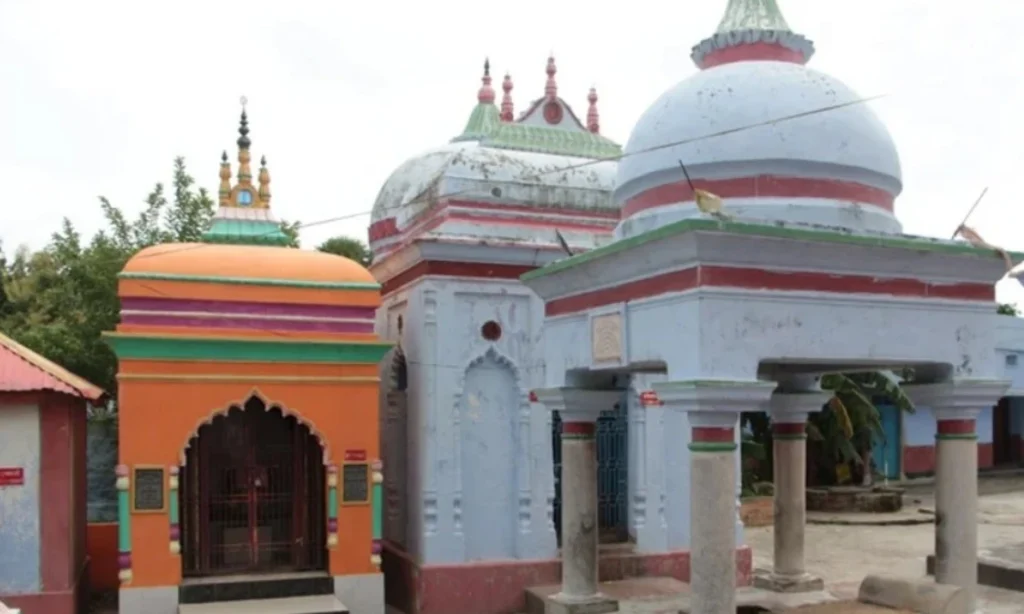Explore Saran District Bihar known for its rich heritage cultural vibrancy and economic growth Discover its historical legacy traditions and progress.

Saran District Legacy Growth and Cultural Brilliance
Saran District, located in the northern state of Bihar, India, is a region steeped in history and culture. Covering an area of approximately 2,641 square kilometers, it is known for its rich heritage, agricultural significance, and vibrant communities. Let’s delve into the many facets of this district.
Geography and Demographics:
Saran District is situated in the Gangetic plains, with the Ganges River flowing through its western boundary. The district shares its borders with three states: Uttar Pradesh to the west, Nepal to the north, and two other districts of Bihar, Vaishali and Gopalganj. This strategic location has made it a center of trade and commerce for centuries.
With a diverse population of over 3 million people, Saran is a melting pot of cultures and traditions. The majority of the population is engaged in agriculture, making it an agrarian economy. The district is divided into several administrative blocks and towns, with Chapra serving as its administrative headquarters.
Historical Significance:
Saran has a rich historical legacy dating back to ancient times. It was an important center during the Magadh Empire and later, the Mauryan and Gupta dynasties. The district is dotted with numerous archaeological sites, including the historic temple complex at Tarai and the ancient city of Chirand, which provide glimpses into its glorious past.
Cultural Diversity:
Saran’s cultural heritage is a tapestry woven with various threads. The district celebrates a myriad of festivals, with Chhath Puja being the most prominent. This ancient sun-worshiping festival is observed with great fervor along the banks of the Ganges, where devotees offer prayers and perform rituals. Apart from Chhath Puja, other festivals like Holi, Diwali, and Eid are celebrated with equal enthusiasm, showcasing the district’s cultural diversity.
Agriculture and Economy:
Agriculture is the backbone of Saran’s economy. The fertile Gangetic plains make it ideal for the cultivation of rice, wheat, maize, sugarcane, and vegetables. The district also boasts a robust dairy industry, with many farmers engaged in cattle rearing and milk production. Additionally, the handloom industry, known for producing beautiful sarees and textiles, contributes to the local economy.
Education and Development:
Saran has made significant strides in education and development. The district is home to several educational institutions, including the Rajendra College and the Jai Prakash University in Chapra. Efforts are ongoing to improve educational infrastructure and promote literacy among the population.
Challenges and Opportunities:
Despite its cultural richness and agricultural prominence, Saran faces its fair share of challenges. Infrastructure development, healthcare facilities, and employment opportunities remain areas of concern. However, initiatives are underway to address these issues and unlock the district’s untapped potential.
Famous Places in Saran District
Saran District in Bihar, India, is home to several notable and culturally significant places. Here are some famous places to visit in Saran District:
Harihar Nath Temple: Located in the heart of Chapra, this ancient temple dedicated to Lord Shiva is a major religious attraction. Its impressive architecture and religious significance draw devotees and tourists alike.
Gautam Asthan: This historical site in Gopalganj is believed to be the birthplace of Lord Gautam Buddha. Pilgrims visit this sacred spot to pay their respects and seek blessings.
Sonepur Cattle Fair: Held annually in the town of Sonepur, this is one of Asia’s largest cattle fairs. It’s a colorful and vibrant event where traders and farmers gather to buy and sell livestock, making it a unique cultural experience.
Chirand: An archaeological site along the banks of the Ganges, Chirand is an ancient city dating back to the Mauryan period. It offers a glimpse into the region’s rich history and has yielded numerous artifacts.
Tarai: This village is famous for its temple complex, including the Tarai Mandir and Maa Tarai Asthan. It’s a popular destination for devotees during festivals and a serene place for spiritual seekers.
Gurudwara Sri Guru Tegh Bahadur Sahib Ji: Located in Dhubauli, this Sikh shrine is dedicated to Guru Tegh Bahadur Sahib Ji, the ninth Sikh Guru. It’s a place of religious significance and tranquility.
Panini Math: Named after the ancient Sanskrit grammarian Panini, this place in Saran is believed to be his birthplace. It’s of great linguistic and historical importance.
Rohtasgarh Fort: Although not within Saran District, this historic fort is nearby and worth a visit. It’s a massive hill fort with stunning views and a rich history dating back to the 7th century.
These famous places in Saran District offer a mix of religious, historical, and cultural experiences. Visitors can immerse themselves in the rich heritage of the region while enjoying its architectural marvels and natural beauty.
Read More :-